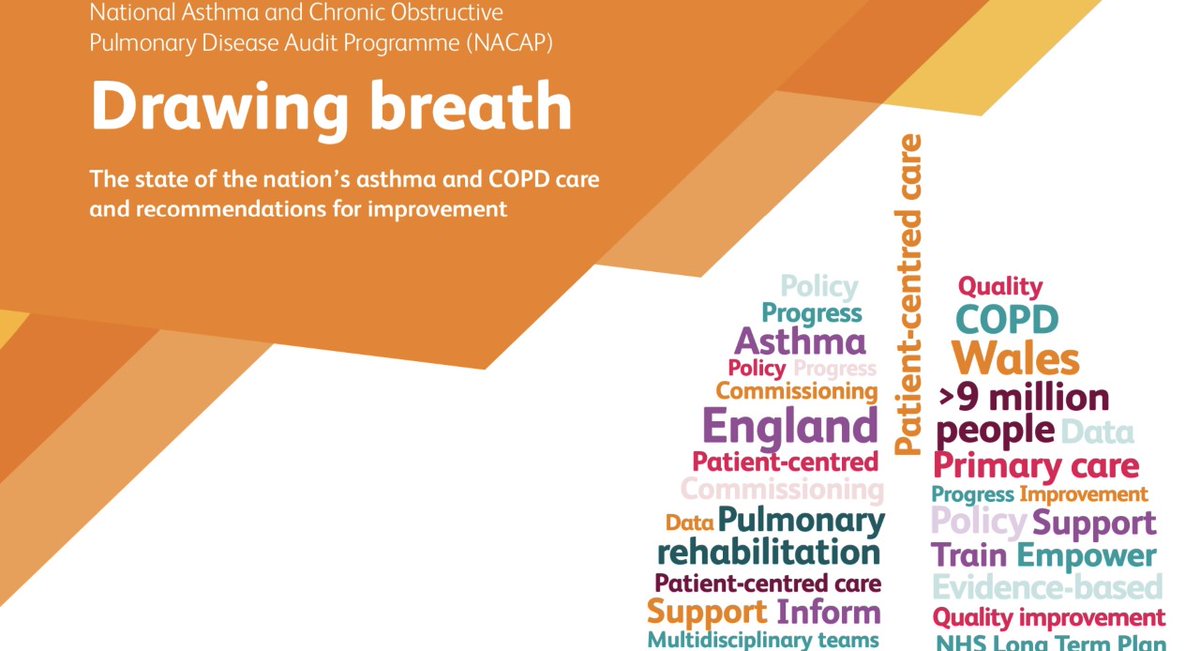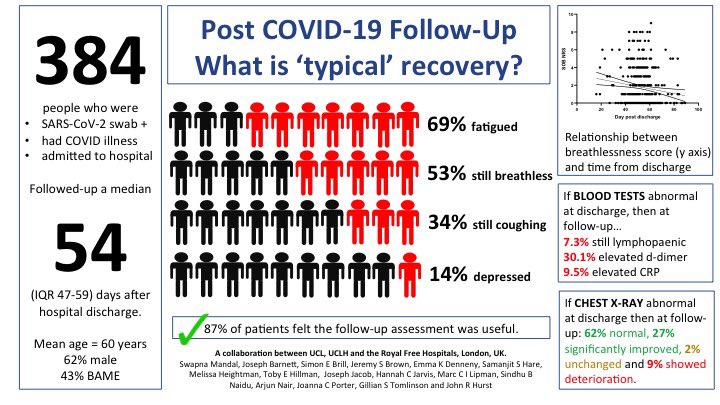
NEW
Yesterday we published our first combined asthma and COPD 'Drawing Breath' @NACAPaudit report.
I thought I'd highlight a few key themes.
First, it's important to note that these data reflect care during the pandemic period when front line clinical teams were stretched...
Yesterday we published our first combined asthma and COPD 'Drawing Breath' @NACAPaudit report.
I thought I'd highlight a few key themes.
First, it's important to note that these data reflect care during the pandemic period when front line clinical teams were stretched...

We have four key recommendations, each relevant to #asthma in adults, asthma in children and young people and #COPD, including #PR services.
The first area is that everyone should be able to access early and accurate diagnosis. Here are some key findings; we need to do better:
The first area is that everyone should be able to access early and accurate diagnosis. Here are some key findings; we need to do better:

The second theme is the need for TIMELY care when a person has been admitted to hospital, for example receipt of systemic steroids in asthma, or #NIV in COPD for those who need it. 

Here is some more data on timely care.
What are YOU doing to make improvements to these metrics where you work?
What are YOU doing to make improvements to these metrics where you work?

Next, we believe people with respiratory disease should receive care from an appropriately trained clinician, at each stage of the care pathway. How are we doing? The data here are more positive, especially around leadership for services in hospitals. 

And this is translating to some, but not all people admitted to hospital with asthma or COPD receiving specialist input. Providing this 7 days a week is a particular challenge, but it's important as it associates with better process outcomes. 

The final these is about better integration of services for people with asthma and COPD across primary community and secondary care, and for young people with asthma transition to adult services. Here are the headline data: 

Data is power. Knowing how your own service performs compared to the national picture and peers enables local solutions to drive healthcare improvement. And that's what NACAP is all about.
The data here represent >103K records from >700 clinical services in England and Wales.
The data here represent >103K records from >700 clinical services in England and Wales.
Huge credit to the clinical teams who, despite the pressures of COVID and COVID recovery, continued to strive to drive healthcare improvement in people living with respiratory disease.
We've lots more to do. But together we can, and people living with lung disease deserve this.
We've lots more to do. But together we can, and people living with lung disease deserve this.
Huge thanks to all from the @RCPhysicians team, and particularly to our partners: @BTSrespiratory, @RCPCHtweets, @asthmalunguk, @PCRSUK, @ARNS_UK, @rcgp and @imperialcollege.
I hope this thread was useful. Here's a link to download the full report:
rcp.ac.uk/projects/outpu…
I hope this thread was useful. Here's a link to download the full report:
rcp.ac.uk/projects/outpu…
• • •
Missing some Tweet in this thread? You can try to
force a refresh






